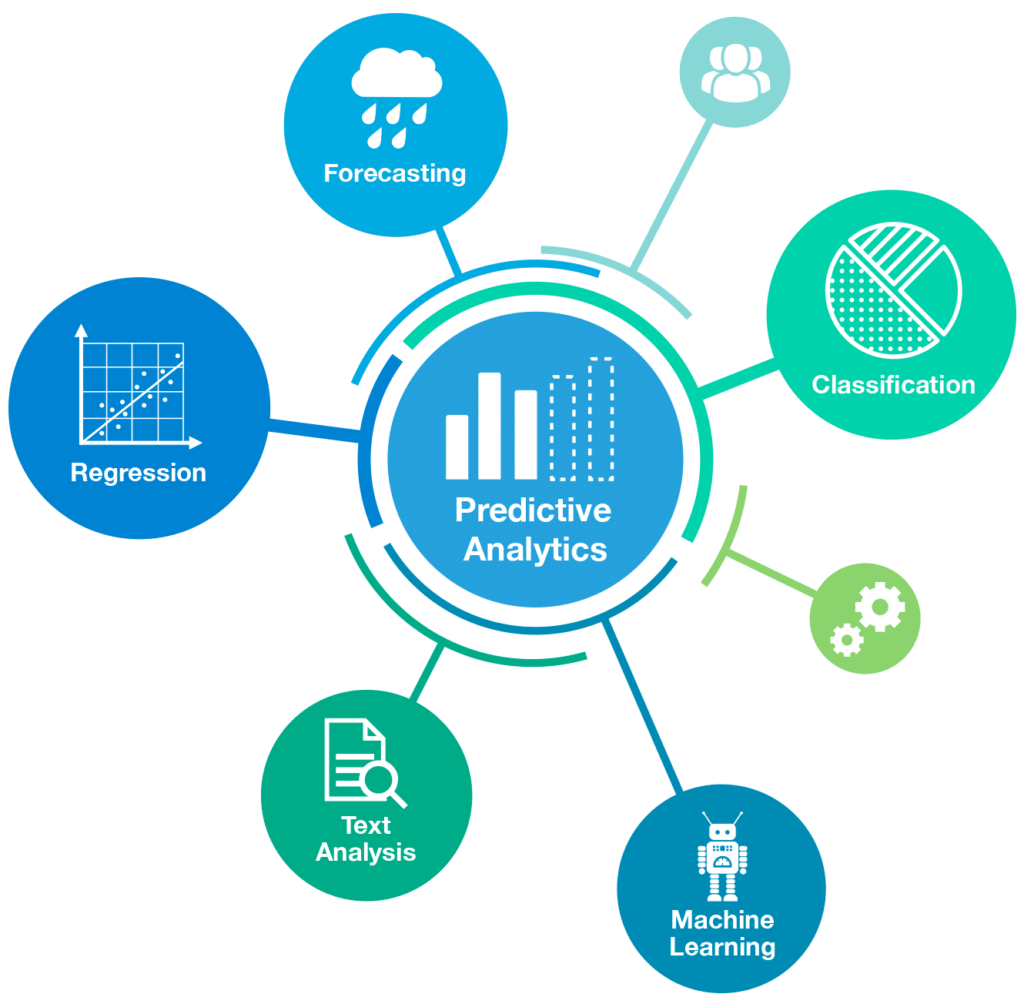- Home
- About
- Services
Data Engineering
and Analytics - Resources
- Partner with Us
Predictive Analytics - The Upcoming Frontier of BI
Businesses have been exposed to more data than ever before since the dot.com revolution. Modern firms now collect more data in a month than they did in the whole 2000s.
However, having access to enormous volumes of data is pointless if a company does not use it to generate valuable insights and make decisions that improve its business processes. The business intelligence function assists companies in doing precisely that.
Business intelligence and data analytics services encompass tools, methods, and procedures for collecting, integrating, analyzing, and presenting data generated by businesses and their consumers. BI solutions, as opposed to traditional data analytics strategy, convey information more logically.
Businesses can use the correct BI tools to gain precise insights that can help them make decisions about sales, marketing, product development, customer service, and other areas.
Although traditional BI tools are designed to provide insights into past interactions or current events, the inclusion of predictive analytics— which elevates machine learning, historical insights & statistical algorithms —can provide businesses with a glimpse into the future.
They accomplish this by spotting opportunities and enabling firms to be adaptable and proactive in their approach to future developments.
Let’s look at the role of predictive analytics in business intelligence and how firms may use it to improve their operations.
Explaining predictive analytics
Predictive analytics makes use of data to sketch out the future. Advanced, complicated systems employ historical data to build patterns, which are then used to provide human users with a notion of what is to come.
Data scientists have created a variety of predictive analytics models, each tailored to a certain function:
Forecast models: Forecast models anticipate future outcomes using a variety of input types, such as how long an engine component will last, how many in-store customers to expect on a particular day, how much of an item to maintain in inventory & so on.
Classification models: Classification models use data to sort information and are particularly useful in answering yes/no queries, such as predicting which customers or staff are most likely to churn & so on.
Outlier models: Outlier models alert users to data points that do not match projections, which can be a concern. Anomalies such as an unexpected drop in revenue or a sudden increase in email traffic may indicate something to investigate, such as misconduct, poor performance, or fraud.
Time series models: Time series models are constantly changing conditions: Holidays such as Halloween and Christmas occur yearly, and decorators account for this in their models; other firms pay attention to predictable cycles such as election seasons, the Olympics, astronomical and weather occurrences.
Clustering models: Clustering models divide data into smaller groups so that users can address them more specifically: Clustering can send different messages to clients at different phases of a sales funnel.
How can businesses leverage predictive analytics?
To use predictive analytics, a business must first establish a business goal, such as increasing revenue, optimizing processes, or improving consumer engagement. The organization can then use the proper software solution to sort through enormous amounts of heterogeneous data, construct predictive analytics models, and generate actionable insights in support of that goal.
Let’s look at how predictive analytics can help with business insight.
One of the most common applications of predictive analytics in business intelligence is to improve service delivery. Businesses can improve the customer experience by researching prior behaviors and preferences and tailoring their service offerings to the specific demands of each consumer.
Businesses require a strong anti-fraud solution, and data analytics and business intelligence merged using predictive analytics might well be the answer.
In contrast to usual fraud prevention techniques relying on reactive concepts to restrict the damage that occurred due to fraudulent methods, predictive analytics in BI assists businesses in identifying potential fraud and proactively policing their service delivery channels to prevent these transactions.
Businesses now have a wealth of data about their clients’ purchasing habits and preferences. With this information, predictive analytics can calculate the possibility of a customer purchasing a product, which can help firms focus their marketing efforts on customers who are more likely to buy their products.
Predictive analytics aids in risk identification and management by applying machine learning algorithms to aggregated data sets to discover trends, correlations, and weaknesses, as well as map changes within any given industry. With this information, corporate executives can take precautionary measures to avoid potential operational risk.
Customers are traditionally divided into different categories based on shared characteristics such as age, gender, and income. By implementing machine learning and artificial intelligence into their existing customer relationship management systems, firms can take this approach a step further and forecast which segments are most likely to buy certain products based on past purchases.
Based on previous medical history and family medical history, healthcare providers can use predictive data analytics strategy to detect whether patients are at risk of getting particular ailments, such as arthritis, diabetes, and asthma. It allows doctors and other healthcare providers to give more personalized care.
Predictive Analytics: The Next Frontier
To keep ahead of the competition in today’s competitive business world, businesses must be on their toes. You can always keep one step ahead of your competitors using data analytics and business intelligence tools powered by predictive analytics.
If predictive analytics is the holy grail of business intelligence and data analytics services, there is one more thing to say about them: they are here, and firms are using them right now. Some businesses will collect and synthesize data while remaining stuck in the past. Others will move a step forward, using that data to forecast days, months, and years.
If you are ready to glimpse the future, consider the following questions: What data that you work currently must upload to your predictive analytics device? What further information do you demand? Then, what’s holding you back from getting started?


